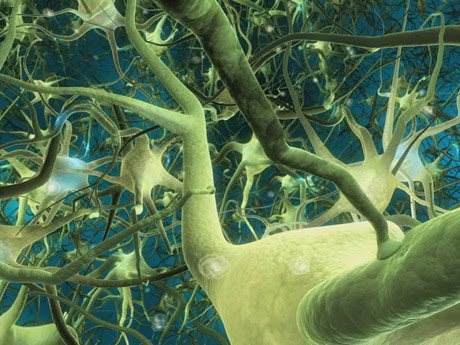Here I am building up a story about the importance of NTS in the regulation of appetite. I start off with introducing leptin and then talk about its signalling pathway and how the response to leptin can be measured. After that I mention why we should look at the NTS in relation to appetite regulation and finally give some evidence of the effect leptin plays in appetite regulation in the NTS.
Leptin
- is synthesised predominantly in adipose tissue (Zhang et al, 1994) in proportion to fat mass, but also in skeletal muscle (Wang et al, 1998) and stomach (Bado et al, 1998)
- acts (in terms of the regulation of appetite) on arcuate nucleus (ARC) to stimulate anorexic POMC/CART neurones and to inhibit AgRP/NPY neurones, which results in a reduced food intake (anorexic effect of leptin) and increased energy expenditure
- acts via leptin receptors (LepR); there are 6 isoforms LepRa-f which are made from one gene by alternative splicing; the majority of leptin's effect is assigned to LepRb (i.e. the long form of the receptor)
- leptin mediates its effect on a cell via a JAK-STAT pathway
JAK-STAT pathway
- there are seven mammalian STAT family members (STAT1-STAT4, STAT5A and B, STAT6)
- STAT = signal transducers and activators of transcription
- leptin has been associated with STAT3, which has three isoforms (alpha, beta, gamma)
- JAK = Jason kinase (of tyrosine residues)
- upon leptin binding to LepRb, JAK phosphorylates tyrosine residues of the intracellular part of the receptor which attracts STAT3, which is phosphorylated itself by JAK
- phosphorylated STAT3 (pSTAT3) forms dimers and migrates to cell nuclei to activate gene transcription: (Image from Pedranzini et al., 2004)

- in this way, leptin results in synthesis of proteins which then mediate the effect of leptin on e.g. appetite and energy expenditure
- in a lab, pSTAT3 is used as an indicator of cellular (e.g. neuronal) activity in response to leptin; an example of a technique is immunohistochemistry & microscopy using antibodies developed against pSTAT3
Why look at NTS?
- as mentioned in the previous post, NTS is receives and processes signals from the mouth and the gastrointestinal tract, sensing taste and nutrients
- its neuroness project to other areas of the brain which are involved in the regulation of appetite, e.g. hypothalamic nuclei and other parts of brainstem
- so NTS is in a good position to be involved in the appetite regulation
NTS, leptin and appetite
- NTS neurones have increased pSTAT3 levels after peripheral leptin administration (Ellacott et al, 2006), which leads us to believe that they express LepRs
- indeed, NTS neurones express LepR as was shown by studies of mouse models with fluorescent proteins under the control of LepR promoters
- this means that neurones which have active promoter of the LepR gene, and thus most likely express the LepR, will also express the fluorescent protein, which is under the control of the same promoter as the LepR
- leptin administration to the NTS produces hypophagia and weight loss
- rats with LepR knocked-down by AAV-shRNAi in NTS and area postrema (AP) have chronic hyperphagia (Hayes et al, 2010)






